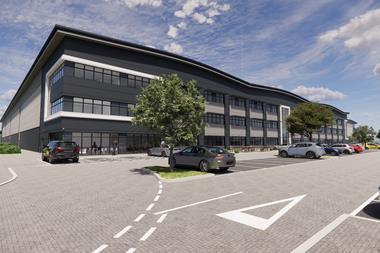Think cybersecurity and your mind can be drawn to clandestine government agents targeting each other’s state-level digital infrastructure during times of crisis behind closed doors.

But the issue is far more commonplace, and cyber incidents are now one of the most important risks currently facing global business. Cyber-attacks will cost businesses $10.5trn (£8.6trn) annually by 2025, according to market research agency Verdantix last year.
And from our own recent research, we know that one third of UK office workers have experienced a data security breach at their organisation, with London being the most likely location to experience a digital security failure. This is also recognised by senior decision-makers, with 95% of chief executives concerned about the security of their organisation’s data.
The global picture is similar. There were 404 global data breaches reported in the first quarter of 2022, according to the Identity Theft Resource Center – an increase of 14% from the previous quarter.
Businesses are now responding to these risks. Our data also reveals that nearly two thirds (63%) of office workers are concerned about the security of their organisation’s data – and this rises to 78% of London office workers. A secure wifi network connection is also important to 93% of office workers.
Offices are evolving to suit the flexible nature of today’s working environment, which is underpinned by technology. With more digital touchpoints in the workplace, and the rise of remote working, the risk of cyber incidents for businesses is increasing. As evidence of this, the targeting of ‘Internet of Things’ (IoT) devices surged by 2,204% between January 2021 and September 2021.
Cybersecurity should be a top priority right now for every business, organisation and individual.
Flexible workspace providers and office landlords need to ensure this is addressed proactively through a well-thought-out technology strategy. And it is critical to address the full hierarchy of security needs: physical, network and digital – this holistic view is the best way to ensure end-to-end digital security and cybersecurity.
The goal is to minimise complexity for staff and for enterprise-grade security to do its job seamlessly beneath the surface, while a private global network underpins everything. In the world of corporate long-leased offices, it is possible to segregate networks and mitigate much of the cybersecurity risk. However, for the fast-moving world of flex, it’s not possible to maintain this segregation and prompt management without technically trained staff. This is where the role of intelligent automation comes in and is instrumental in the simplification and automation of digital services, physical spaces and occupiers – further removing the risk of human error.
Office occupiers are also willing to pay a premium for tech-enabled spaces of up to 20%, with the majority of those surveyed saying that having digital and physical security is the number-one-ranking strategic benefit of using flex spaces.
As business and working life continues its march towards a digital future, the very real threat of a cybersecurity breach walks alongside – and the spike in global cyber-attacks and data breaches shows no sign of abating. Cybersecurity should be a top priority right now for every business, organisation and individual.
James Shannon is chief product and technology officer at global software and technology company essensys





























No comments yet